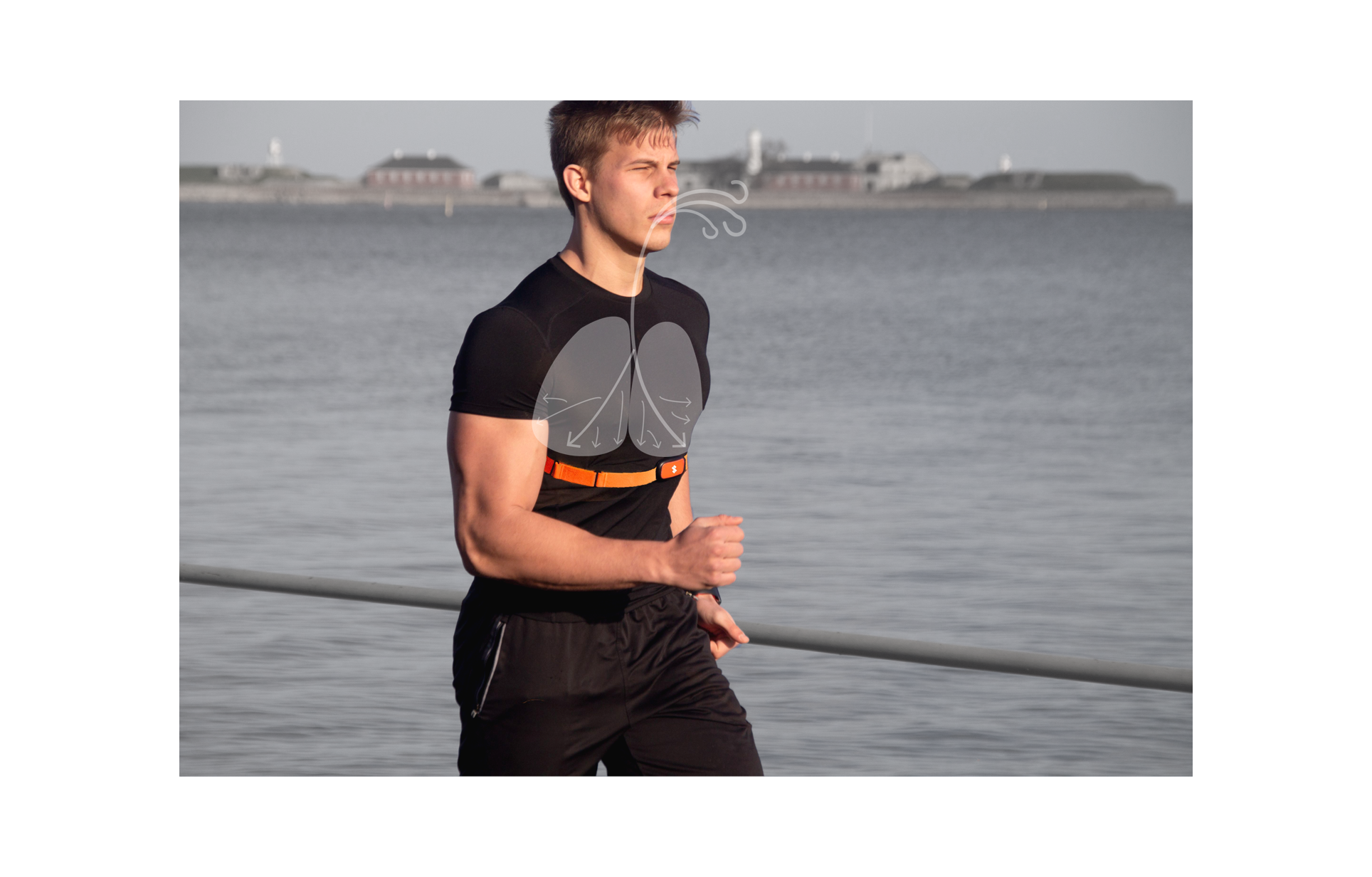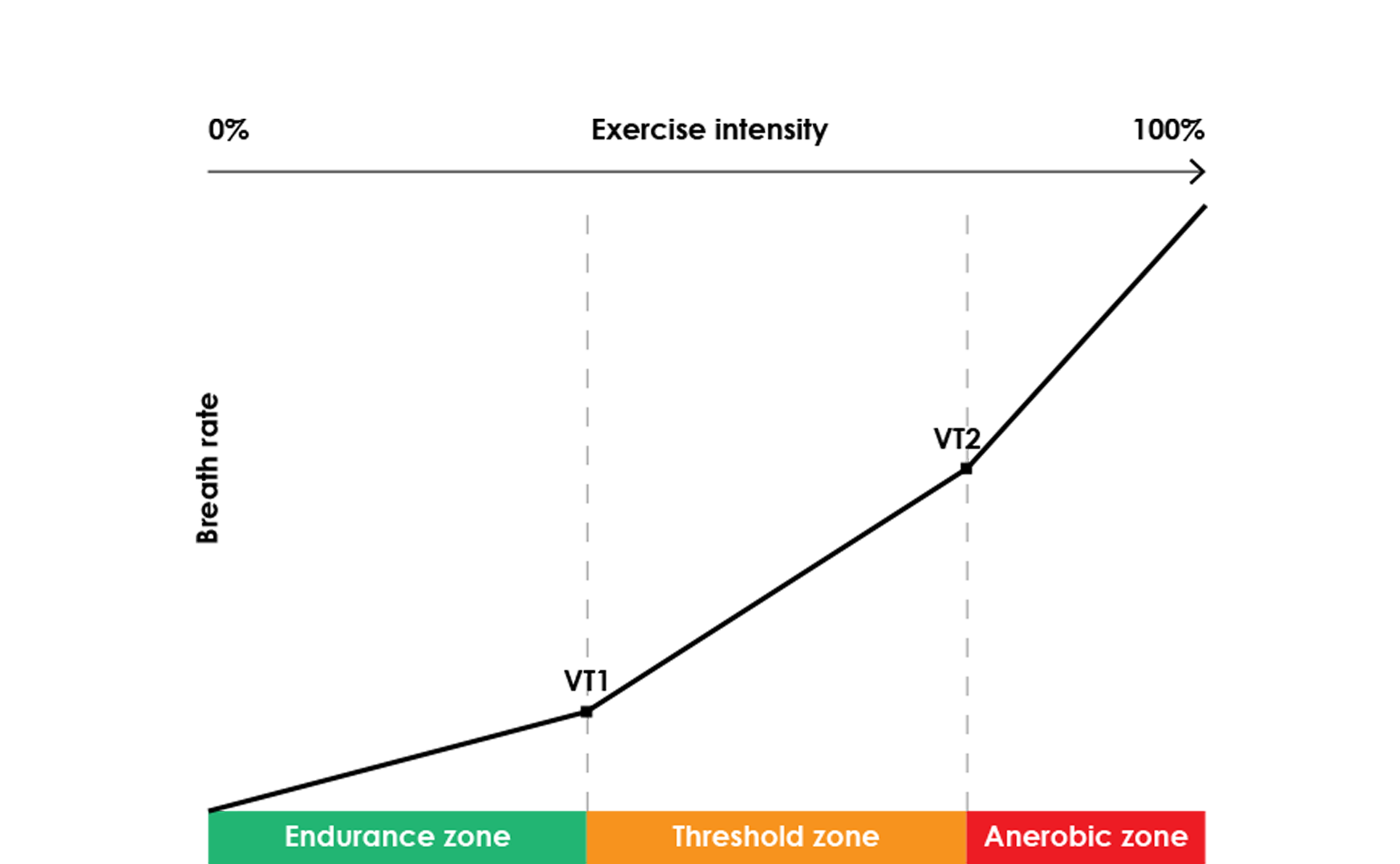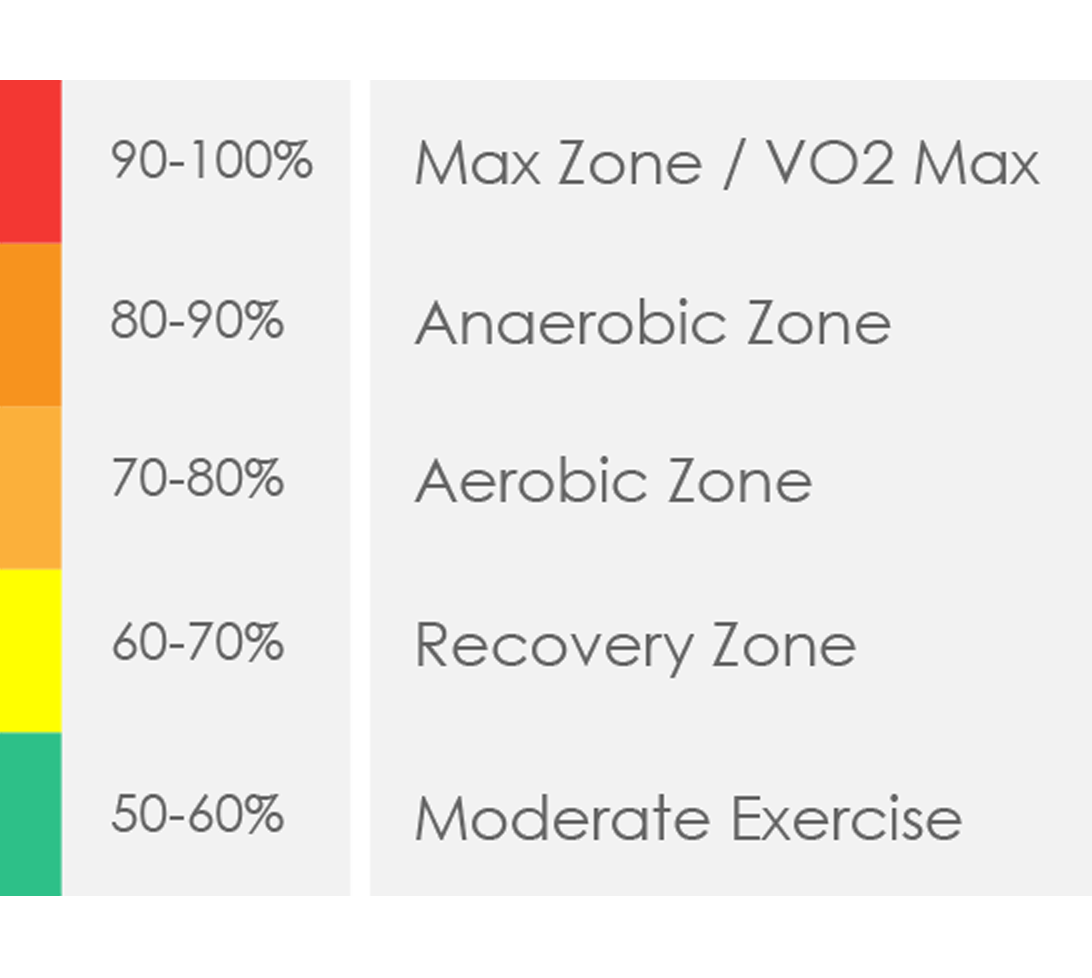We define the exercise intensity by increases in fR during exercise, from which our strong algorithm automatically configures your training zones.
Endurance Zone:
Through research, it is known that in the early stages during exercise, fR increases linearly until a deflection point occurs known as the first ventilatory threshold (VT1) where lactate begins to accumulate in the blood. We define the zone up to VT1 as the “Endurance Zone” where exercise can be continued for a long period (e.g. 30-90 minutes) depending on fitness level.
Threshold Zone:
The next strong respiratory marker of intensity change is the second ventilatory threshold (VT2). At and above VT2, lactate has quickly accumulated in the blood and is therefore also known as lactate threshold or anaerobic threshold. We define the “Threshold Zone” to be between VT1 and VT2 where exercise can be continued in a moderate period (e.g. 20-30 minutes). The so-called “sweet spot” is just below your VT2 where you are able to maintain a high intensity while preventing muscles from tiring too quickly.
Max Zone:
When exercise intensity exceeds VT2, high intensity can no longer be sustained due to accumulation of lactate and will after a short period result in total exhaustion. This period, we define as the “Max Zone” where you are only able to exercise in a short period (e.g. 30 seconds – 2 minutes).




